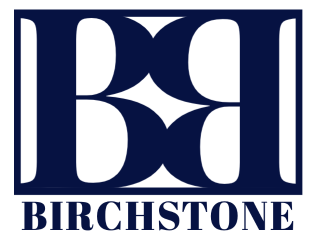Balancing risk and reward is a fundamental concern in growth and income investing. As investors navigate the intricacies of the financial landscape, it becomes crucial to assess the varying levels of risk associated with different investment options.
While some assets, like U.S. Treasury Bills, are often considered risk-free due to government backing, concerns about solvency arise from escalating government debt.
This article explores the concept of risk and reward alignment in growth versus income investing, delving into the measures used to evaluate risk and the strategies employed in both growth and income investing.
Key Takeaways
- Growth investing aims to increase investment value and is recommended for young investors.
- Income investing focuses on assets that produce consistent passive income and is preferred during retirement.
- Multifamily real estate offers a blend of safety, growth, and income with lower risk.
- Matching investment risk with personal risk tolerance is crucial for investment success.
Risk and Reward Alignment
The alignment of risk and reward is a crucial consideration when evaluating investment choices. It helps to ensure that the potential returns offered by riskier assets are commensurate with the level of risk taken on. To achieve this alignment, investors must first assess their risk tolerance. Understanding one's risk tolerance allows for the selection of investments that match their comfort level, ensuring that the potential rewards are acceptable.
Additionally, investment diversification plays a significant role in balancing risk and reward. By spreading investments across different asset classes, sectors, and geographic regions, investors can mitigate risk and increase the likelihood of achieving a desirable return. Diversification helps to reduce the negative impact of any single investment's poor performance on the overall portfolio, thus aligning risk and reward in a prudent manner.
Risk Measures
Risk measures such as alpha, beta, R-Squared, standard deviation, and the Sharpe ratio are commonly used to evaluate the potential risks associated with different investment options.
Alpha measures an investment's return compared to a benchmark, indicating the excess return generated.
The Sharpe ratio, on the other hand, is a risk-adjusted measure that calculates the excess return earned per unit of risk taken. It considers both the investment return and its volatility.
By analyzing these risk measures, investors can assess the risk-return profile of investment choices and make informed decisions. For example, a higher alpha or Sharpe ratio suggests a potentially better risk-adjusted return.
Consistency in using the same risk measure for comparison is crucial to ensure accurate evaluation across different asset classes.
Growth Investing
Growth investing involves targeting capital appreciation by investing in young, rapidly growing companies or funds that have the potential for higher returns. This investment strategy is often recommended for young investors who have a longer investment horizon and can tolerate higher levels of risk. There are several benefits of growth investing, including the potential for higher returns compared to income investments and the opportunity to benefit from the growth of innovative companies. However, there are also factors to consider when choosing growth investments. Investors should carefully evaluate the company's growth prospects, management team, competitive landscape, and industry trends. It is important to diversify the portfolio and not put all investments in high-risk growth stocks. By considering these factors, investors can make informed decisions and balance risk and reward in their growth investment strategy.
| Benefits of Growth Investing | Factors to Consider when Choosing Growth Investments |
|---|---|
| Potential for higher returns | Evaluate company's growth prospects |
| Opportunity for innovation | Assess management team |
| Long-term investment horizon | Analyze competitive landscape |
| Diversification | Consider industry trends |
| Higher risk tolerance | Balance risk and reward |
Income Investing
Income investing involves focusing on assets that generate consistent passive income, such as real estate, dividend stocks, bonds, royalties, and other options. This approach is particularly appealing for individuals seeking stable income sources, especially during retirement.
To further understand income investing, consider the following:
-
Dividend stocks: These are stocks that pay out a portion of the company's earnings to shareholders in the form of dividends. They can provide a regular income stream.
-
Retirement income: Income investing becomes crucial as retirement approaches, as individuals often seek stable income sources to sustain their lifestyle without relying on labor income.
-
Bonds: Bonds are fixed-income securities that pay interest over a specified period. They are considered relatively safer investments compared to stocks and can provide consistent income.
-
Royalties: Royalties are payments received by individuals or companies for the use of their copyrighted works, patents, or natural resources. This can be a passive income stream for investors.
Income investing, with its focus on generating consistent passive income, offers an alternative investment strategy for individuals looking for stable income sources, particularly during retirement.
Frequently Asked Questions
What are some common risk measures used to evaluate investment options in growth and income investing?
Common risk measures used to evaluate investment options in growth and income investing include Alpha, Beta, R-Squared, Standard Deviation, and Sharpe Ratio. These measures provide objective assessments of risk and help in making informed investment decisions across different asset classes.
How does the risk-return profile of growth investments compare to income investments?
The risk-return profile of growth investments is generally higher compared to income investments. Growth investments offer the potential for higher returns but come with a higher level of risk, while income investments provide more stable income but with lower potential for growth.
Are there any specific investment strategies that can help balance risk and reward in growth and income investing?
Investment strategies for balancing risk and reward in growth and income investing include diversification, asset allocation, and regular portfolio rebalancing. Long-term considerations involve assessing investment goals, risk tolerance, and time horizon to make informed decisions.
What are the key factors to consider when determining the appropriate level of risk tolerance in investment choices?
Determining the appropriate level of risk tolerance in investment choices involves considering factors such as age, financial goals, time horizon, and personal comfort with volatility. These factors help individuals assess their risk tolerance and make informed investment decisions.
Can you provide examples of specific growth stocks/funds and income assets that are commonly recommended for investors in each category?
Examples of growth stocks commonly recommended for investors include Amazon and Tesla. These high-risk investments have the potential for higher returns. Examples of income assets commonly recommended include bonds and dividend-paying stocks, which provide consistent passive income.

